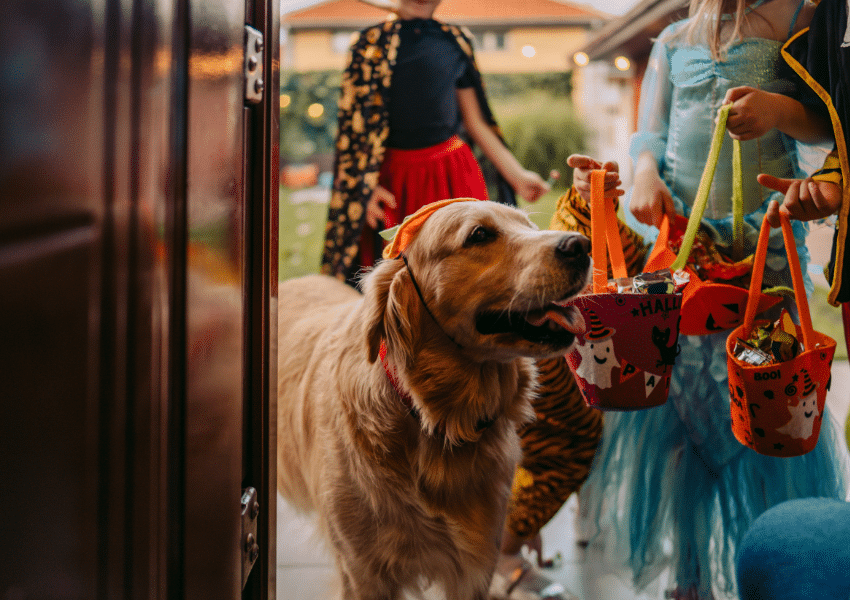
by California Casualty | Helpful Tips, Pets, Safety |
Ghosts, goblins, and giggles — Halloween is one of the most magical nights of the year! Between the costumes, candy, and community fun, it’s a night made for memories. But even the most festive fright night needs a few safety tricks to keep the fun from turning into a scare. Whether you’re sending your little pumpkins out to trick-or-treat, wrangling a costumed pup, or decking out your porch for visitors, a little preparation goes a long way toward keeping the night safe and spooktacular.
Little Monsters on the Move (Kids’ Safety Tips)
Keep your little ghouls glowing and grinning from door to door with these safety tips.
- Shine bright! Choose bright, reflective costumes or add glow sticks, light-up accessories, or reflective tape so kids stay visible as they roam.
- Double check the fit. Make sure costumes aren’t too long (no tripping hazards) and choose flame-resistant materials for extra safety.
- Breathe easy. Skip the mask and go for nontoxic face paint — it makes it much easier to see and breathe.
- Add ID. For younger kids, tuck a note with your name and phone number in a pocket, or write it discreetly on their arm — just in case you get separated.
- Stick to sidewalks. Walk on sidewalks whenever possible, and cross only at corners — never between parked cars. Review safety around vehicles with your kids.
- Make a plan. For older trick-or-treaters, set a route, a curfew, and some ground rules: stay in groups, visit only well-lit homes, and never enter a stranger’s car or house.
- Inspect the loot. Once the candy haul is home, check for anything unsealed or suspicious, and watch for choking hazards for younger kids.
- Think outside the block. Not sure about your neighborhood for trick or treating? Check out local mall events or community “Trunk or Treats” for a fun and family-friendly alternative.
Halloween can be confusing for our furry friends — after all, strangers in costumes and ringing doorbells aren’t exactly normal! Help your pets enjoy the night, too.
- Desensitize early. Let them see your costume ahead of time, especially if it includes masks or props. Try feeding them treats while you are in costume to get them accustomed to it.
- Practice door knocks. Have family members or friends simulate trick-or-treaters so your pet gets used to the noise and the routine.
- Create a safe space. Some pets prefer peace and quiet. Set them up in a cozy room with a radio or TV for background comfort during trick or treating hours.
- Keep them secure. Whether it’s behind a baby gate, in a crate, or on a leash, make sure they can’t bolt out an open door, or get slammed by one.
- Reflective is best. If your pet joins you outside, use a reflective leash. Add reflective tape to your dog’s costume or collar for extra visibility.
- Ensure an adult is in control. Even if your child can manage your dog, they are not experienced in how to react should something go wrong.
- Keep an eye on your pet’s mood. Your pet may act differently in a crowd of people with costumes, lights, noise and other stimuli. They may bite or scratch if they feel threatened. If they seem stressed, bring them home.
- No candy, please! Chocolate and artificial sweeteners like xylitol are toxic to pets, so keep those treats out of paw’s reach.
Home Sweet Haunted Home (For Homeowners)
Your home is part of the Halloween magic—make it inviting and safe for trick-or-treaters!
- Light the way. Replace any burnt-out bulbs, sweep away leaves, and clear your walkway of toys, bikes, or tools.
- Flameless fun. Skip open flames in pumpkins and go for battery-operated candles or LEDs instead.
- Decorate safely. Skip flammable décor like cornstalks or hay bales. They can ignite quickly from a warm bulb or stray spark. Choose safer materials to keep your spooky setup fire-free.
- Mind the allergens. Avoid candies with peanuts or tree nuts and consider nonfood treats like stickers or small toys. Did you know that a teal pumpkin on your porch signals that you’re giving out nonfood items for those concerned about allergies?
- Check your systems. Test smoke detectors and carbon monoxide detectors and ensure outdoor cameras and your security system are working.
- Pool precautions. If you have a pool, make sure it’s well-secured and off-limits to curious ghouls. Not only could it pose a danger to them in their Halloween costumes, it could put you, as the homeowner, at risk.
- Stay alert on the road. Driving during trick-or-treat hours? Slow down and keep an eye out for excited kids who may dart into the street.
- Neighborly watch. If you won’t be home during prime candy hours, let a neighbor know so they can keep an eye out. Leave a bowl of treats in a well-lit area for passersby.
Finally, know the Halloween horrors covered by your insurance policy. With a few thoughtful steps, you can make Halloween magical, memorable, and mishap-free. From all of us at California Casualty, have a safe and Happy Halloween!
This article is furnished by California Casualty, providing auto and home insurance to educators, law enforcement officers, firefighters, and nurses. Get a quote at 1.866.704.8614 or www.calcas.com.
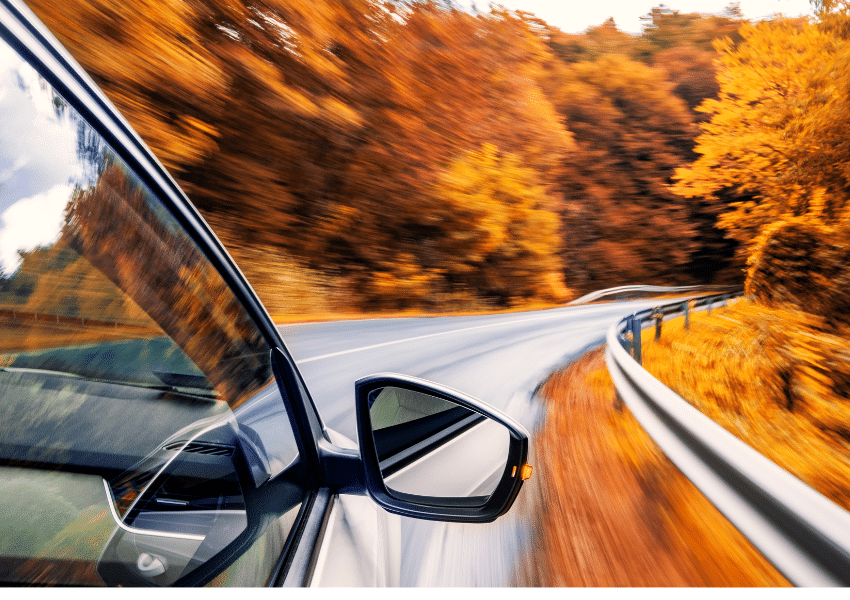
by California Casualty | Auto Insurance Info, Helpful Tips, Safety, Travel |
As the temperature drops and the leaves begin to fall, road conditions change in ways that can catch even experienced drivers off guard. Deer are more active, wet leaves can be as slick as ice, and shorter days mean more time driving in the dark. Here’s what to watch for this season—and how to steer clear of danger.
Watch for Deer on the Move
You’ll often see deer during dawn and dusk at the side of the road during the fall months. That’s when they’re foraging for food. Keep a sharp eye out near wooded areas and where deer crossing signs are posted. If you must stop, use your hazard lights to alert other drivers. A few tips to remember:
- Deer travel in groups; if you see one, more are likely close behind.
- Avoid swerving. Swerving can confuse the animal and cause them to run in the wrong direction. It also can put you in the path of oncoming traffic. Instead, slow down in a controlled manner and let the deer pass.
- Know your insurance coverage. Damage from hitting a deer is typically covered by comprehensive insurance—not liability. Check to see if your policy includes it.
Beware of Leaf Trouble
Fallen leaves may look pretty, but they can cause more problems than you might think. Here are just some of the hazards.
Wet Leaves
When wet, leaves can be as slick as ice. They can also block roadside drains, creating puddles and hidden hydroplaning risks. make sure your tires are properly inflated to help maintain grip. If you drive over wet leaves and your tires lose traction:
- Don’t slam the brakes. Ease off the gas. If you need to brake, use a light pumping motion.
- Steer gently in the direction you want to go.
- When you feel the tires connect with the road, you can proceed as normal.
Dry Leaves
Dry leaves and hot car parts don’t mix. Avoid parking over leaf piles. Your exhaust or catalytic converter can ignite them, even if the engine’s off. Also, keep leaves away from garages and undercarriages so there’s no chance that they can cause trouble.
Around Your Car
Leaves can clog air filters, radiators, and windshield gullies. Remove them regularly to prevent foul-smelling moisture buildup and potential damage to your car’s paint or electronics.
Hidden Potholes and Road Hazards
A thick carpet of leaves — or later, snow — can hide potholes, curbs, and lane markings. Drive cautiously and maintain extra distance from the car ahead. Slow down near leaf piles; kids sometimes play in them. And remember, some drivers are more focused on the foliage than the road, so stay alert.
Adjust to Early Darkness
When daylight savings time ends, you may find yourself driving home in the dark more often. Make sure your headlights and brake lights are working properly. Darkness also affects depth perception, so give yourself more space and time to react.
- Drive at a speed where you can stop within your headlight range.
- Use high beams when safe and dim them for oncoming cars.
- Watch for pedestrians and pets, especially during dusk and dawn when visibility is lowest.
Reduce Sun Glare
The sun sits lower in the sky during fall, which means more blinding glare during morning and evening commutes. Keep sunglasses handy, use your visor, and clean your windshield inside and out — streaks and dust scatter light and make it harder to see. Replace your windshield wipers as needed. If glare is intense, slow down and increase your following distance.
Handle Fog and Frost the Right Way
Foggy and frosty fall mornings reduce visibility fast. They can sneak up on your car’s windows as temperatures fluctuate. Don’t drive with foggy or icy glass. Use your defroster and a scraper or try a DIY de-icer (three parts vinegar to one part water).
- If it’s foggy, engage your fog lights to increase visibility. Don’t use your high beams; they have the opposite effect — reflecting off the fog and temporarily blinding you.
- Turn on your defroster or crack a window to balance temperatures and prevent your windshield from fogging.
- Remember: frost on your windshield means it could also be on bridges and overpasses, which freeze first. Proceed with caution.
Keep an Eye on Tire Pressure
Cooler weather means lower tire pressure. For every 10-degree drop in temperature, tires can lose about one PSI. Low pressure affects traction, braking, and fuel efficiency, so check often and inflate your tires as needed.
Share the Road with School Buses
Fall also means back-to-school season. Be aware of how that impacts traffic safety and know the rules about school buses:
- Yellow flashing lights: The bus is preparing to stop.
- Red lights and extended stop arm: The bus has stopped for children.
- Always stop — never pass. Watch for kids crossing the street or walking near the bus and remember that visibility is lower in early morning and late afternoon light.
Don’t Forget Your Insurance
Even the most cautious drivers can’t prevent every accident. Make sure your auto insurance is up to date so that you have peace of mind when the unexpected happens.
Safe travels this season!
This article is furnished by California Casualty, providing auto and home insurance to educators, law enforcement officers, firefighters, and nurses. Get a quote at 1.866.704.8614 or www.calcas.com.
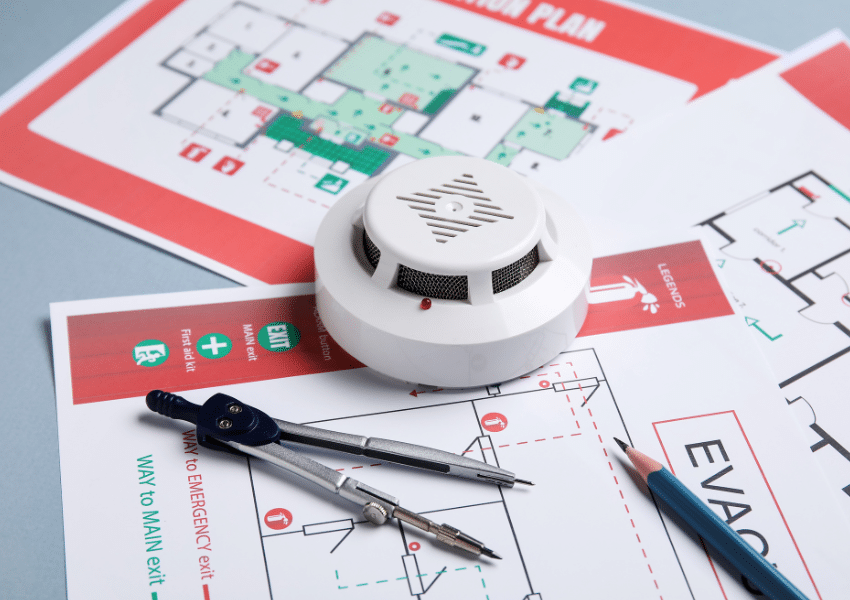
by California Casualty | Helpful Tips, Homeowners Insurance Info, Safety |
When fire breaks out, every second counts. Knowing exactly what to do—and what to avoid—can mean the difference between safety and tragedy. Whether you’re at home, at work, or out in public, understanding how to respond in a fire emergency gives you the power to act quickly, protect loved ones, and make it out safely.
Understanding the Phases of a Fire
Before you can respond effectively, it helps to understand how a fire behaves. Fires move through distinct phases, though the timing can vary depending on what is burning and where the fire occurs:
- Incipient Phase – This is the very beginning, when the fire first ignites. If detected quickly, it may still be possible to put it out safely with the right tools.
- Growth Phase – Flames spread, heat builds rapidly, and conditions begin to change. This is when a small fire can suddenly get out of control.
- Fully Developed Phase – At its peak intensity, a fire consumes all available fuel, producing thick smoke and toxic gases. Escape is the only safe option.
- Decay Phase – As the fire runs out of fuel, flames and heat decrease, but smoke and gases can still be dangerous.
What to Do in a Fire Emergency
When you encounter fire, your actions need to be quick, calm, and deliberate. Here are the key “Do’s” to remember:
1. Act Early if It’s Safe
If you catch the fire in its earliest stage (the incipient phase), and you have the right type of extinguisher, you may be able to stop it from spreading. Always aim the extinguisher at the base of the flames, not the middle or top.
In the kitchen:
- Turn off the heat source.
- Smother small stovetop flames with a metal lid, baking sheet, or fire blanket.
- Use baking soda or salt on grease fires—but never water or flour.
- Follow these tips for other ways to put out a fire.
- If a fire starts inside your oven or microwave, keep the door closed. The lack of oxygen will usually cause the fire to die down.
If the fire is spreading quickly, do not try to fight it. Get out immediately and call 911.
2. Get to Safety
Plan for at least two exits from every room in your home. Fires often make the most obvious path unusable. Heavy smoke can quickly disorient you, so it helps to know the layout of your home by memory. Practice fire drills with your family so that everyone knows how to react without hesitation.
3. Stay Low
Smoke rises and carries carbon monoxide, which can make you dizzy or even cause unconsciousness. Crawling low to the ground gives you cleaner air to breathe and increases your chance of escape.
4. Stop, Drop, and Roll
If your clothing catches fire, don’t run. Running only fuels the flames. Instead, stop, drop to the ground, and roll back and forth while covering your face. This smothers the flames and helps prevent serious injury.
5. If You’re Trapped
Sometimes escape isn’t possible. If you can’t get out:
- Stay away from doors that are hot to the touch.
- Block smoke by placing wet towels or blankets along the bottom of doors.
- Open windows cautiously, crouching down to avoid rising smoke and heat.
- Signal for help by waving a flashlight or cloth out the window.
What NOT to Do in a Fire Emergency
Just as important as knowing what to do is knowing what not to do. Certain instinctive reactions can actually make things worse:
- Don’t use elevators. Fires can cause electrical failures or trap you inside. Always use the stairs.
- Don’t pour water on grease fires. Water splashes burning oil and creates explosive steam.
- Don’t pour flour on a fire. Flour is combustible. Stick with baking soda, salt, or a fire extinguisher.
- Don’t use water on electrical fires. Water conducts electricity and can cause electrocution.
- Don’t fan flames. Adding oxygen only makes a fire grow.
- Don’t stand too close or reach over flames. Loose clothing can ignite quickly.
- Don’t move burning objects. This can spread flames to new areas.
- Don’t aim a fire extinguisher at the flames themselves. Remember: always target the base of the fire.
Preparing Before a Fire Happens
While these tips can help in the moment, preparation is your best defense. Here’s how to protect yourself and your loved ones:
- Install smoke alarms on every level of your home, especially near bedrooms. Test smoke detectors monthly and replace batteries at least once a year.
- Create and practice a fire escape plan with your household. Make sure every member—children included—knows how to get out and where to meet once outside.
- Keep fire extinguishers accessible. Place them in the kitchen, garage, and near exits. Learn how to use them before an emergency arises.
- Understand the common causes of fires so you can take steps to fireproof your home and minimize these risks.
- Know your insurance coverage. Even when you do everything right, fires happen. Having the right coverage can make the recovery process easier and less stressful.
This article is furnished by California Casualty, providing auto and home insurance to educators, law enforcement officers, firefighters, and nurses. Get a quote at 1.866.704.8614 or www.calcas.com.
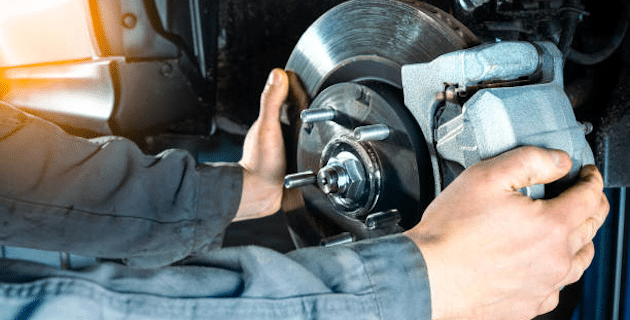
by California Casualty | Auto Insurance Info, Helpful Tips, Safety |
When it comes to keeping you safe behind the wheel, nothing works harder than your brakes. They’re your car’s first line of defense against accidents, yet most drivers don’t think about them until something goes wrong—a squeak, a grind, or that sinking feeling when the pedal doesn’t respond like it should.
The good news? You don’t need to be a car expert to understand how brakes work or how to spot trouble before it turns into a safety issue. With a little knowledge, you can keep your brakes in top shape and give yourself peace of mind every time you drive.
How Do Brakes Actually Work?
At their core, brakes use one simple idea: friction. When you press your foot on the brake pedal, you’re triggering a hydraulic system—a system powered by fluid—that pushes brake pads or brake shoes against a spinning surface attached to your wheels. That pressure and friction are what slow your car down.
Think of it like riding a bicycle. When you squeeze the hand brakes, the pads press against the rim of the wheel, creating friction that makes the bike stop. Your car brakes work on the same principle, just on a larger and more powerful scale.
Most modern cars also have power-assisted brakes, which make it easier for you to press down, and an anti-lock braking system (ABS), which prevents the wheels from locking up during sudden stops. That keeps your car more stable and easier to steer in an emergency.
Disc vs. Drum: The Two Main Types of Brakes
Most vehicles on the road today use a hydraulic braking system with either disc brakes, drum brakes, or a combination of both.
- Disc Brakes: These are the most common, especially on the front wheels (which handle most of the stopping power). A spinning disc, called a rotor, is clamped by a caliper holding brake pads. When you press the brake pedal, the pads squeeze the rotor, creating friction to slow the wheel.
- Drum Brakes: These are more often found on rear wheels. Inside the brake drum, brake shoes are pressed outward by pistons when you hit the brakes, rubbing against the drum to slow the car.
You don’t need to memorize the mechanics, but it helps to know that both systems rely on brake fluid, pads or shoes, and the principle of friction to get the job done.
Warning Signs Your Brakes Need Attention
Brakes give you plenty of signals before they fail completely. The key is to notice them early:
- Strange Noises: A squeal often means your brake pads are wearing thin. A grinding sound could mean the pads are worn down completely, with metal scraping against metal.
- Soft or Spongy Pedal: If the brake pedal sinks toward the floor or feels unusually soft, it may signal a leak in the brake system or air in the brake lines.
- Car Pulling to One Side When Braking: If your vehicle veers left or right when braking, it could be uneven brake wear, contaminated fluid, or a problem with the brake linings.
- Dashboard Warning Lights: Don’t ignore that glowing brake light. It’s your car’s way of asking for help.
If you notice any of these symptoms, it’s time to schedule a brake check before things get worse.
Simple Brake Maintenance Tips
You don’t need to be a mechanic to stay on top of basic brake care. A little attention can go a long way toward preventing costly repairs and keeping you safe. Here are some practical steps:
- Check Brake Pads: Brake pads wear down over time. If they’re less than ¼ inch thick, it’s time to replace them. Worn pads reduce your stopping power and can damage other parts of the braking system.
- Watch for Grease or Debris: Brake pads should be clean and dry. Grease or oil on them can reduce friction, making it harder to stop.
- Brake Fluid: Your mechanic should check the level and condition of your brake fluid regularly. Fresh brake fluid is clear or light in color. Dark or dirty fluid should be replaced.
- Rotors and Drums: Look for signs of grooves, cracks, or warping. Depending on the severity, they may need to be resurfaced or replaced.
- Brake Lines: Over time, brake lines can develop leaks from corrosion or damage. Any leak in the system reduces braking power and must be fixed immediately.
A good rule of thumb is to have your brakes inspected at least once a year—or sooner if you notice any changes in how they feel or sound. The cost of regular maintenance is small compared to the expense (and stress) of major repairs, not to mention the potential consequences of an accident.
Brakes may not be the flashiest part of your car, but they’re among the most important. Knowing how they work, spotting warning signs early, and keeping up with maintenance can give you confidence on the road and keep you—and your passengers—safe.
Of course, even the best brakes can’t prevent every unexpected situation. That’s where the right insurance comes in. Just as your brakes protect you in the moment, good coverage protects you afterward—helping you recover from accidents, repairs, or losses. Together, brake care and the right insurance give you the peace of mind to enjoy the drive, knowing you’re fully protected.
This article is furnished by California Casualty, providing auto and home insurance to educators, law enforcement officers, firefighters, and nurses. Get a quote at 1.866.704.8614 or www.calcas.com.
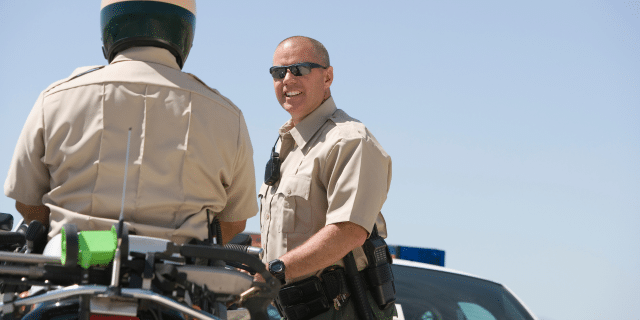
by California Casualty | Firefighters, Health, Helpful Tips, Peace Officers, Safety |
When temperatures soar, staying cool isn’t just a comfort—it’s a matter of safety. For law enforcement officers and first responders, the summer heat adds another layer of challenge to already demanding duties. Whether directing traffic under the blazing sun or responding to emergencies in heavy gear, heat stress can sneak up fast. Here are some smart, practical strategies to help you keep your cool.
Suit Up for the Season
Your uniform is your armor, but under the summer sun, it can turn into a sauna. Choosing the right gear can make a huge difference in staying cool.
- Go Light and Breathable: If your department permits, opt for summer uniforms made from lightweight, moisture-wicking materials like mesh, rayon, cotton, or lightweight polyester. These fabrics help sweat evaporate quickly, keeping your body temperature in check.
- Add Cool Extras: Cooling vests, neck wraps, and other personal cooling gear can provide extra relief on scorching days—just make sure they’re approved by your department.
- Bike & Traffic Patrol Tips: Tactical shorts and ANSI-certified high-visibility polos keep you mobile, visible, and comfortable.
- Head-to-Toe Comfort: Swap out heavy hats for breathable, UV-protective caps—department approved of course. Choose moisture-wicking socks—many of which include anti-odor features—to keep your feet dry and blister-free.
Pro Tip: Wear your ballistic vest on the outside. In summer, it’s better to skip layering over it. Outer vest carriers offer protection and breathability—without sacrificing your uniformed look.
Hydrate for the Long Haul
When you’re in the sun for hours, even mild dehydration can take a toll. Drink early and often.
- Water Is #1: Drink before, during, and after your shift. Don’t wait until you’re thirsty.
- Try Coconut Water: It’s a great natural source of potassium and electrolytes.
- Skip These: Caffeinated drinks, sodas, energy drinks, and alcohol all dehydrate you. Caffeine constricts blood vessels and acts as a diuretic, while alcohol sets you up for a rough shift the next day.
Eat to Beat the Heat
It takes a lot of energy for our bodies to digest a steak dinner. When our body breaks down protein, it creates heat. Don’t let heavy meals weigh you down. Aim for lighter, heat-friendly meals and snacks leading up to and during your shift.
- Choose Hydrating Snacks: Watermelon, peaches, apricots, and radishes are great choices.
- Select Leafy Greens: They’re loaded with water and easy on your system.
- Enjoy Smart Fuel: Choose lean proteins and whole grains to keep energy up without overheating your body’s digestive system.
Don’t Forget Sunscreen, Bug Spray & Other Essentials
It’s not just the heat. Make sure you protect your skin from damaging rays and uncomfortable, itchy bites.
- Slather the Sunscreen: Apply broad-spectrum SPF 30+ generously and reapply every two hours, especially if you’re sweating.
- Bring the Bug Spray: This is essential if your beat includes grassy or wooded areas. Mosquito bites are more than just an annoyance.
- Take Towels in the Cruiser: Keep a stash of clean towels to wipe off sweat and help you cool down quickly. Try a cooling towel; it will absorb your sweat and create a cooling effect.
Know When to Rest
Recovery is just as important as readiness. Smart breaks can keep you from overheating and reduce the risk of heat-related illness.
- Take Breaks: When possible, rest in the shade or an air-conditioned vehicle. Short pauses throughout your shift can help regulate body temperature and maintain focus.
- Watch for Warning Signs: Learn to recognize early symptoms of heat stress—like dizziness, nausea, or confusion—and act quickly if they appear.
- Use the Buddy System: Keep an eye on your partner—and yourself—for signs of heat exhaustion.
- Have a Heat Emergency Plan: Know what to do if you or a colleague begins to show symptoms. This goes for K-9 partners, too!
Know the Warning Signs
Heat illness can escalate quickly—from cramps to exhaustion to life-threatening heat stroke. Be alert for these symptoms:
Signs of Heat Stroke:
- Body temperature above 103°F
- Dizziness or disorientation
- Nausea or vomiting
- Headache
- Hot, red, dry skin
- Rapid heartbeat
- Confusion
If you or a partner exhibit any of these, take immediate action:
- Get to a cool area
- Remove excess gear
- Apply cold compresses or ice packs to the forearms, neck, or groin
- Seek medical help immediately
As law enforcement officers and first responders, you face challenges every day—especially when the heat is on. That’s why we’re proud to protect the heroes who protect all of us. From custom insurance coverage to exceptional service tailored to law enforcement professionals, we’ve got your back—on duty and off.
This article is furnished by California Casualty, providing auto and home insurance to educators, law enforcement officers, firefighters, and nurses. Get a quote at 1.866.704.8614 or www.calcas.com.
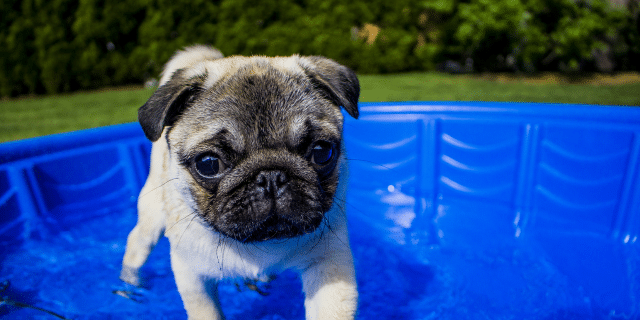
by California Casualty | Pets, Safety |
Summer is here, and our four-legged friends are ready to make the most of it—soaking up the sun, chasing butterflies, and joining us for backyard barbecues and beach days. But while the season is packed with tail-wagging fun, it also brings a few hidden hazards that can sneak up on even the most watchful pet parents. From sizzling sidewalks to tempting picnic snacks, summertime can be trickier than it looks. Here’s how to keep your fur babies safe, healthy, and ready for all the warm-weather adventures ahead!
Barbecues, Picnics, and Parties
Nothing says summer like a backyard cookout—but it’s not always a pet-friendly affair. Popular BBQ foods like rib bones, corn on the cob, and watermelon rinds may seem harmless but can cause serious health issues, including choking and intestinal blockages. Onions, grapes, and alcohol are outright toxic to pets, and treats like ice cream and potato salad can upset sensitive stomachs. Also be mindful of wooden skewers and toothpicks, which can splinter and cause internal injuries if chewed or swallowed.
Remind your guests not to share their food with your pet. Instead offer pet-safe treats as an alternative. Supervise your furry friend closely, especially if they’re known for getting into mischief—or are particularly sociable.
Lawn and Pool Chemicals
Beautiful lawns and sparkling pools can hide serious dangers. Fertilizers, pesticides, and pool chemicals are harmful if ingested, inhaled, or absorbed through your pet’s paws. Always store chemicals securely, clean up spills right away, and keep pets off freshly treated grass. When possible, choose pet-safe products that reduce the risk while still maintaining your outdoor space.
Dangerous Plants
Gardening this summer? Be sure your landscaping isn’t a hidden health hazard. Azaleas, lilies, rhododendrons, tulips, and daffodils are just a few of the plants that can be toxic to pets. Ingesting them can lead to vomiting, seizures, heart issues, and even death. Before heading out on a walk or letting your pet explore the garden, brush up on which plants are safe. (Check out our pets and plants blog for a detailed guide.)
Itchy and Stinging Insects
Summer means bugs—and lots of them. Fleas, ticks, and mosquitos can make your pet miserable and may carry dangerous diseases like heartworm and Lyme disease. Bees, wasps, and fire ants also pose risks, especially to curious pets who like to sniff and paw at anything that moves.
To protect your pet:
- Use flea, tick, and heartworm preventatives
- Check daily for ticks, especially after walks in wooded or grassy areas.
- Eliminate standing water and trim overgrown plants to deter pests.
- Monitor your pet for signs of bites or stings, such as swelling, excessive scratching, or difficulty breathing. In the case of a severe allergic reaction, seek veterinary help immediately.
Heat and Humidity
High temperatures and humidity can quickly lead to heat exhaustion or heatstroke, especially for older pets, overweight pets, or breeds with short snouts like pugs and bulldogs. Signs of heatstroke include excessive panting, drooling, and dry gums (a sign of dehydration). Your pet also may appear lethargic.
Always provide shade and fresh water and avoid intense activity during the hottest parts of the day. Never leave your pet in a parked car—not even for a few minutes. On a 75-degree day, the temperature inside a vehicle can soar to 100 degrees in just 30 minutes.
Also, be cautious of hot pavement and sand. Use the hand test: place your hand on the sidewalk for seven seconds. If it’s too hot for your hand, it’s too hot for paws. And don’t forget about sunburn! Pets can get burned too—especially on ears, noses, and bellies. Use pet-safe sunscreen, never human sunscreen, to protect exposed areas.
The Beach and the Pool
Many dogs love the beach, but it can come with unexpected dangers. Hot sand can burn sensitive paw pads, and ingesting sand can lead to a dangerous bowel obstruction. Sand can also irritate your pet’s eyes if it gets lodged under their eyelids.
As for water safety, not all dogs are natural swimmers. Never force your pet into the water, and always use a pet lifejacket, especially if you’re on a boat or near deep water. After a swim, rinse your dog off to remove salt or chlorine.
Fireworks and Thunderstorms
The loud booms of summer storms and fireworks can terrify pets, causing stress, anxiety, or even escape attempts. Prepare a safe, quiet space indoors where your pet can retreat. You can also try anxiety wraps, pet pheromone sprays, and soft music or white noise. For severe anxiety, talk to your vet about possible calming medications. And always secure doors, gates, and windows in case your pet tries to bolt.
Traveling with Your Pet
Planning a road trip with your fur baby? Keep your pet secured in a well-ventilated carrier or use a pet seatbelt harness. Never leave them unattended in a parked vehicle. Bring along water, treats, and poop bags, and schedule regular breaks.
Make sure your pet is microchipped and wearing ID tags with up-to-date contact info—just in case you get separated. If you’re flying, be sure to review your airline’s pet policy or check out our blog on flying with pets for extra tips.
One More Layer of Protection
We love our pets and no matter how careful we are, accidents happen. Pet insurance can offer peace of mind, helping cover unexpected vet bills so you can focus on keeping your pet happy and healthy all summer long.
This article is furnished by California Casualty, providing auto and home insurance to educators, law enforcement officers, firefighters, and nurses. Get a quote at 1.866.704.8614 or www.calcas.com.






